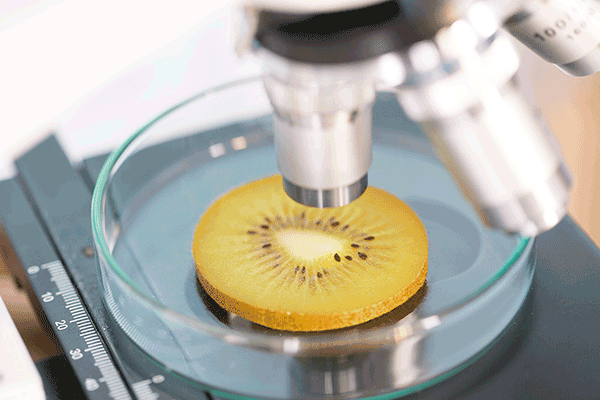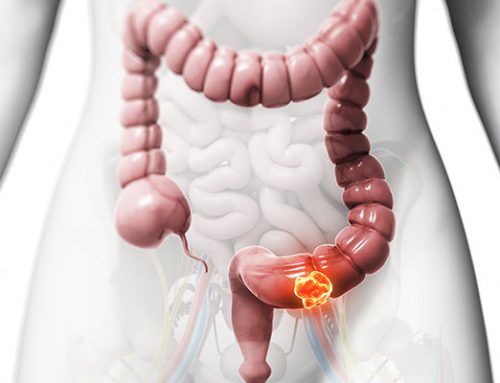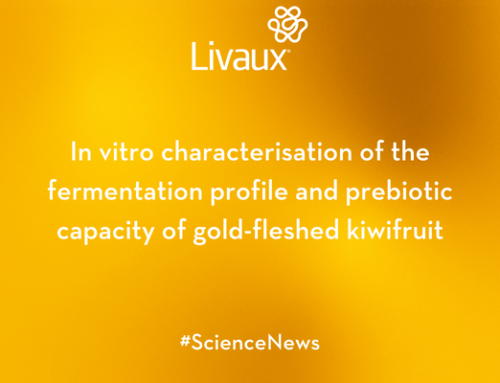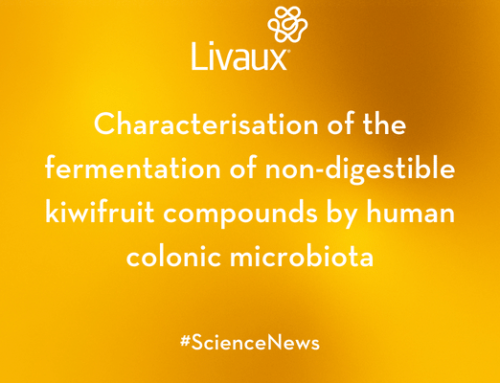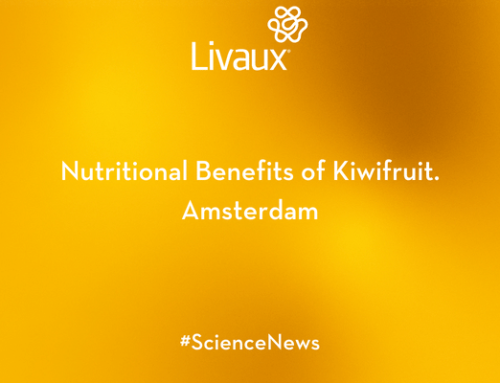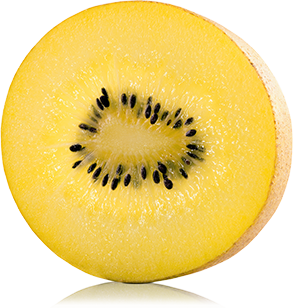Pectin in Kiwifruits and Colon Health
Kiwifruit pectin is a large, highly complex, branched plant cell wall polysaccharide and prebiotic dietary fibre. When consumed, this kiwifruit pectin resists digestion in the small intestine and transits to the large intestine intact. Here kiwifruit pectin’s diverse composition (fucose, arabinose, xylose, rhamnose, galactose, galacturonic acid etc), complex rhamnogalacturonan branch structures and core esterification (methylation, acetylation) allow it to be slowly fermented by the resident microbiota along the entire length of the colon.
Unlike simple or common prebiotics (commercial pectin lacking complete side chains; resistant starch; inulin; FOS or GOS) this intact kiwifruit pectin will confer kiwifruit benefits beyond the proximal colon where it first encounters the microbiota.
Fermentation being prolonged along to the distal colon is advantageous because fermentation benefits are region-dependent, and often the benefits of distal fermentation cannot be realised without fermentable material transiting that far to be accessible by the gut microbes that reside there.
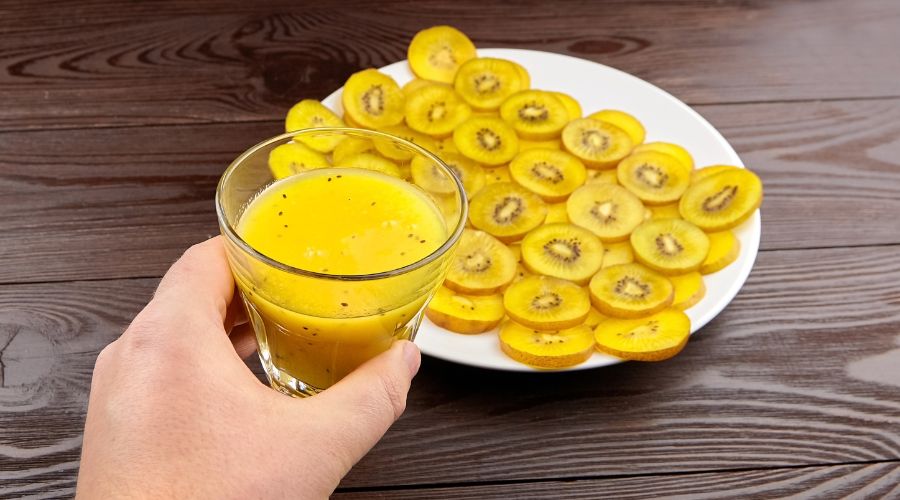
Gut microbes perform important functions that we rely on.
We need their enzymes to extract energy from non-digestible nutrients such as dietary fibre, and their butyrate to power the cells lining our colon. We need their Vitamin K for blood clotting. Babies need them to stimulate the maturation of the gut and immune system properly. Adults need them to maintain our immune balance. Satiety, weight management, glucose homeostasis, mood, and even lung health are all dependent upon gut microbial activity. Therefore, we need a healthy and diverse microbiota.
The reason why a diverse microbiota is important because a diverse microbiota has greater coverage of desired functions, is more adaptable to changing conditions, is more able to utilise dietary fibre or prebiotics we consume, and is more resistant to perturbation by antibiotics or pathogens.
When all occupiable niches are reliably occupied by commensal (beneficial) microorganisms with the metabolic flexibility to react to changing circumstances then those niches will not be vacated and subsequently exploited by invading less beneficial organisms or harmful pathogens.
With a diverse, robust and appropriately responsive microbial community, we will be able to realise the benefits of their provision of useful metabolites to us, such as butyrate and propionate. It just takes a diverse and complex prebiotic such as gold kiwifruit pectin to maintain a diverse microbiota so that butyrate and propionate are produced where they are needed.
Butyrate is produced by specific butyrate-producing bacteria, mainly found in the proximal colon, but by associated with fibres such as kiwifruit pectin these bacteria are able to transit and generate butyrate along the length of the colon.
Butyrate is an endpoint of bacterial anaerobic energy metabolism, important to us because it is the main energy source for our colonocytes comprising the inner (epithelial) wall of the colon: the site of interaction with our gut microbiota and our gut immunity – and thus our systemic immune system. All the gut-systemic axes start here.
Colonocytes absolutely rely upon butyrate for energy: they will not use sugar, and lacking butyrate, will break down their own proteins for energy instead. Butyrate is also a signalling molecule and epigenetic modifier of gene expression. Energy usage-dependent concentrations control cell turnover: proliferation and programmed cell death, essential for maintaining colonic epithelial morphology.
Interestingly, because colonocytes undergoing cancerous transformation stop using butyrate, they are increasingly susceptible to butyrate accumulating to cell death signalling concentrations, making butyrate another of the body’s line of defences against colon cancers. Colon cancers are more prevalent in the distal bowel consistent with a lack of butyrate, reinforcing the importance of consuming fibre such as kiwifruit pectin which is able to be distally fermented.
Propionate is another end-point metabolite of bacterial anaerobic energy metabolism, produced by a different subset of bacteria.
These bacteria naturally occupy the distal colon, where they may scavenge any partially fermented material surviving transit this far, such as kiwifruit pectin. Propionate signals colon enteroendocrine cells to release the satiety hormones GLP-1 and PYY, which act to reduce hunger and regulate blood glucose. Unlike butyrate, which is used up by the colonocytes, propionate is absorbed across the epithelia into the portal vein feeding the liver.
In the portal vein and liver, propionate is gluconeogenic, used as material to replace glycogen stores and further contribute to blood glucose homeostasis. Finally, propionate reduces liver fatty acid synthesis gene expression, modulating weight gain. To generate more propionate in the distal colon, more material such as kiwifruit pectin must be provided to reach there.

